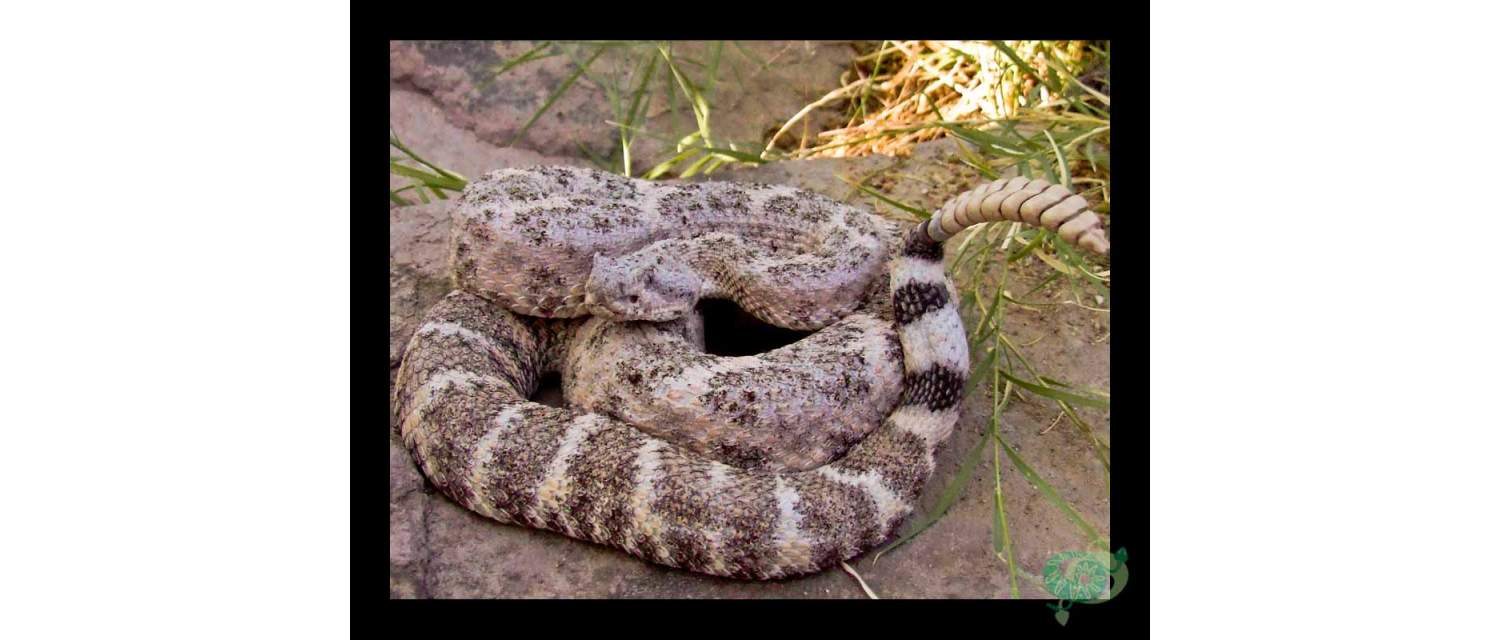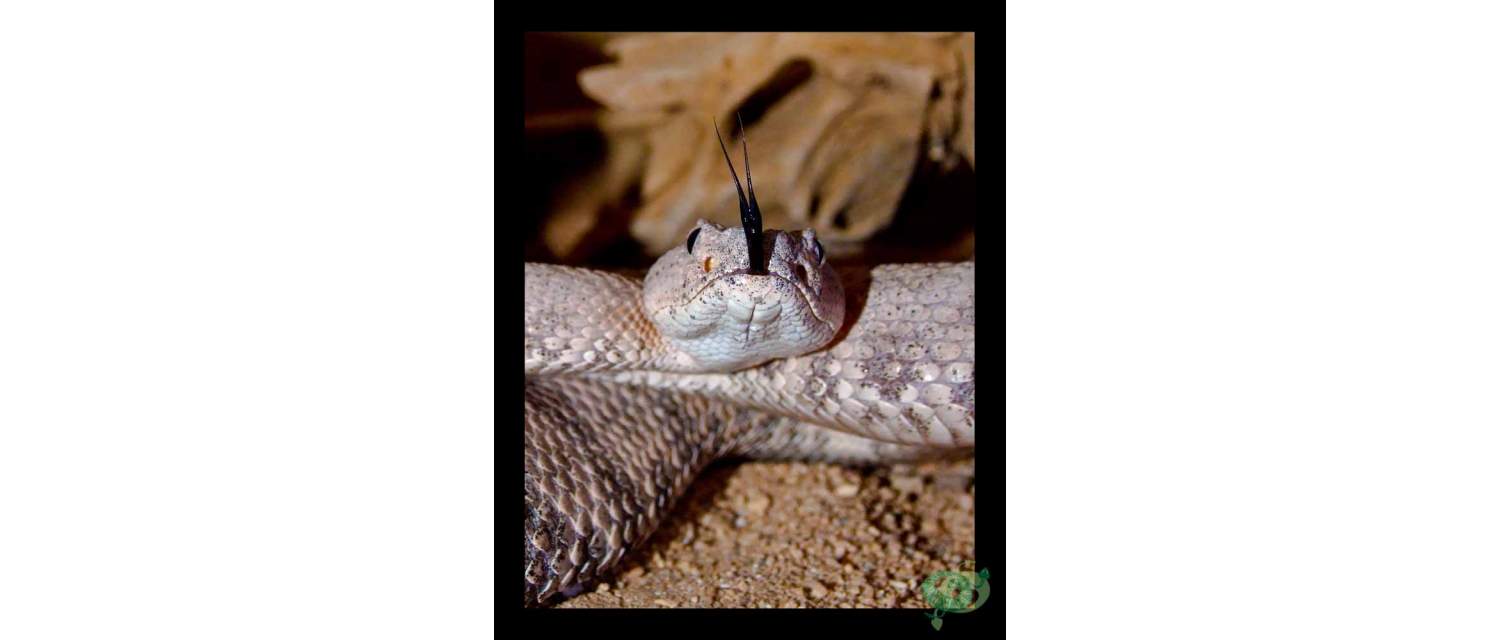
Crotalus mitchellii
(Cope, 1861)
Nombre común:
Reino:
Phylum:
Clase:
Orden:
Suborden:
Familia:
Género:
Especie:
Subespecies:
Descripción:
La cabeza en forma triangular se distingue bien del resto del cuerpo. Su coloración dorsal es extremadamente variable desde el blanco y tonalidades claras de color crema, café, naranja, gris, gris azulado, rosáceo, verdoso o amarillento. La parte superior de la cabeza está manchada y no hay bandas oculares evidentes. Su patrón de coloración se compone de 23 a 42 manchas dorsales obscuras de forma variable. En los costados de su cuerpo tiene manchas secundarias obscuras irregulares. En algunos casos todas las manchas son irregulares tanto en forma y tamaño como en tonalidades lo que le da su nombre común en ingles. La cola esta compuesta de 3 a 9 anillos alternados en blanco y negro a menudo incompletos. El vientre es claro con manchas o puntos obscuros dispersos.
Tamaño:
Hábitos:
Alimentación:
Reproducción:
Número de crías:
Distribución geográfica:
Distribución en México:
- Baja California
- Baja California Sur
Hábitat:
Estatus de protección:
IUCN:
Literatura citada:
Amaral, A. D. 1927. Studies of nearctric ophidia I. Crotalus goldmani
Schmidt, 1922, a synonym of C. mitchelli
Cope, 1861 Bulletin of the Antivenin Institute of America 1 (2): 47-48.
Campbell, J.A. & Lamar, W.W. 1989. The Venomous Reptiles of Latin America. Comstock Publishing/Cornell University Press, Ithaca.
Campbell, J. and W. Lamar. 2004. The Venomous Reptiles of the Western Hemisphere. Cornell University Press. 898 pp.
Cope, E. D. 1861. Contributions to the ophiology of Lower California, Mexico and Central America. Proc. Acad. Nat. Sci. Philadelphia 13: 292-306.
Douglas, M. E.; Marlis R. Douglas, Gordon W. Schuett & Louis W. Porras 2006. Evolution of Rattlesnakes (Viperidae: Crotalus) in the Warm Deserts of Western North America Shaped by Neogene Vicariance and Quaternary Climate Change. Molecular Ecology 15: 3353-3374.
Douglas, M. E.; M. R. Douglas, G. W. Schuett, L. W. Porras & B. L. Thomason 2007. Genealogical concordance between mitochondrial and nuclear dnas supports species recognition of the panamint rattlesnake (Crotalus mitchellii stephensi). Copeia, 2007(4): 920–932.
Frost, D. R., Hammerson, G. A. & Gadsden, H. 2007. Crotalus mitchellii. In: IUCN 2008. 2008 IUCN Red List of Threatened Species.
Downloaded on 21 December 2008. Goldberg, S.R. & C.R. Bursey. 2000. Crotalus mitchellii and Crotalus willardi. Endoparasites. Herpetol. Rev., 31(2): 104. Greene, H. W. 1997. Snakes. The Evolution of Mistery in Nature. University of California Press. 351 pp. Grismer, L. Lee. 1999. An evolutionary classification of reptiles on islands in the Gulf of California, México. Herpetologica 55 (4): 446-469. Grismer, L. L. 2002. Amphibians and reptiles of Baja California including its pacific Islands and the Islands in the Sea of Cortés. University of California Press. 399 pp. Klauber, L. M. 1936. Crotalus mitchellii, the speckled rattlesnake Transactions of the San Diego Society of Natural History 8 (19): 149-184. Klauber, L. M. 1949. Some new and revived subspecies of rattlesnakes. Transactions of the San Diego Society of Natural History 11 (6): 61-116. Klauber, L. M. 1963. A new insular subspecies of the speckled rattlesnake. Transactions of the San Diego Society of Natural History 13: 73-80. Klauber, L. M. 1972. Rattlesnakes: Their habits, life histories and influence on mankind. Berkeley: University of California Press. Lowe, Ch. H., C. R. Schwalbe & T. B. Johnson. 1986. The Venomous Reptiles of Arizona. Arizona Game and Fish Dept. Phoenix, Arizona, USA. Mattison, C. 2007. The New Encyclopedia of Snakes. Princeton University Press. McCrystal H K; McCoid M J 1986. Crotalus mitchellii (Cope). Speckled rattlesnake. Catalogue of American Amphibians and Reptiles No. 388 1986: 1-4 McDiarmid, R. W.; Campbell, J. A. & Touré, T. A. 1999. Snake species of the world. Vol. 1. Herpetologists’ League, 511 pp. NatureServe. 2005. NatureServe Explorer: An online encyclopedia of life [web application]. Version 4.6. NatureServe, Arlington, Virginia. Available http://www.natureserve.org/explorer. Ramírez Bautista, A. y M. C. Arizmendi. 2004. Crotalus mitchellii. Sistemática e historia natural de algunos anfibios y reptiles de México. Facultad de Estudios Superiores Iztacala, Unidad de Biología, Tecnología y Prototipos (UBIPRO), Universidad Nacional Autónoma de México. Bases de datos SNIB-CONABIO. Proyecto W013. México. D.F. Stebbins,R.C. 1985. A Field Guide to Western Reptiles and Amphibians, 2nd ed. Houghton Mifflin, Boston. Winchell, S. 2007. Klapperschlangen! Die Gattung Crotalus. Reptilia (Münster) 12 (4): 18-25. Wong, H. 1997. Comments on the Snake Records of Chilomeniscus cinctus, Crotalus exsul, and C. mitchellii from Islas Magdalena and Santa Margarita, Baja California, México. Herpetol. Rev., 28(4): 188-189.


